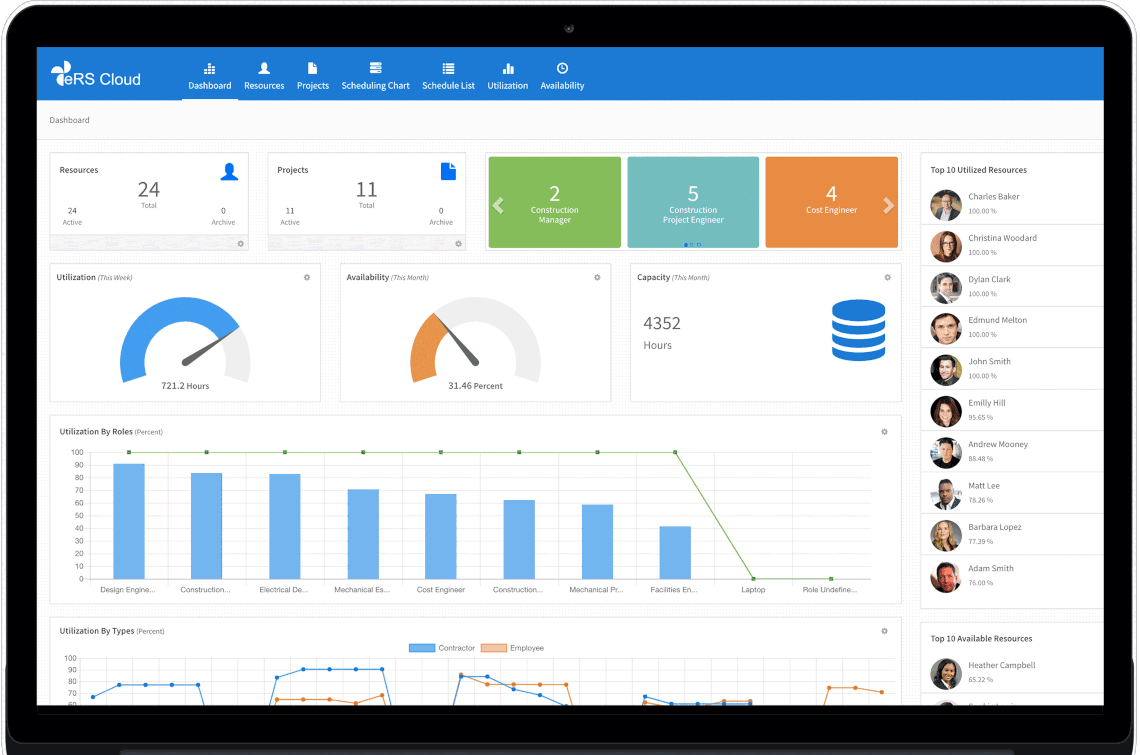
Being a project manager is like being a juggler. You need to keep several balls in the air at a time, making sure that you catch all of it. A single miss - the entire thing goes for a toss.
As a project manager, you get dozens of resource requests from different departments every single day. On top of that, you have to deal with leaves, resource availability, matching the right person to the right task, and much more. Depending on spreadsheets or manual logs to get all this done perfectly is next to impossible.
This is where resource planning tools like the eResource Scheduler come in as a lifesaver. With a ton of handy features and easy-to-use reports and tools, the eResource Scheduler is a resource planning tool like none other. It not only makes resource allocation painless and conflict-free, but it also helps you to optimize your entire resource allocation, improving project efficiency, speed, and performance.
Here, in this post, you can find out the top innovative features of the eResource Scheduler that is not available in regular planning tools.
Having access to updated, real-time information is key to making the right resource allocation and management decisions. The eRS (eResource Scheduler) has a highly configurable dashboard that presents you with all the key information right on the home screen.
Find out the overall resource capacity, current resource utilization, pending resource requirements, project availability, and much more right on the dashboard. Additionally, the dashboard highlights areas that require your immediate attention, helping you handle resource allocation like a pro.
Today, as businesses go global, it's common for organizations to have distributed teams with resources spread across locations, cities, and even countries. Very often, resources are grouped under multiple teams, various departments, and project-wise. This makes it difficult for top-level managers to get a complete idea of the overall resources.
The eRS allows you to maintain a centralized directory of all the resource in your company. You can organize them using various parameters like qualifications, availability, skills, etc. The centralized directory makes it super easy to search and identify the right resources across multiple projects, teams, or offices.
At any time, your company is bound to be working on multiple projects simultaneously. The eRS gives you a centralized list of all projects with key details like - project completion time, project progress, resources working on it, further required resources, and more.
This gives you a bird's eye view of all projects. You can quickly identify the projects that are lagging and step in to get it on track.
Resource utilization is a key factor in boosting resource performance. Measuring resource utilization helps to avoid overloading or underworking resources. It helps in the fair distribution of resources.
The eRS uses advanced algorithms to measure resource utilization across projects, teams, the overall office, etc. You can view resource utilization in easy-to-read reports. Additionally, the information is updated in real-time, i.e., modified whenever a resource is freed, allocated, updated, etc.
The best part - the resource utilization reports in the eRS are highly configurable. You can use filters to find out details about specific resources, use graphs to help you represent overall resource utilization visually, etc.
This helps you get the complete picture of resource utilization so that you can allow resources accordingly.
Before you allocate resources, it's essential that you have access to real-time resource availability. Allocating a particular resource for a project only to find that he/she is on leave during the project days is a major hassle and requires reallocating resources.
The real-time resource availability reports of the eRS show accurate availability data, helping you make the right decisions when it comes to resource planning.
Only when you have an idea of the available resources in hand and required tasks, you can make the right hiring decisions - for short, medium, and long-term. The resource availability chart gets updated in real-time, whenever resources are allocated, released from a project, etc.
This gives you a clear picture of the required resources, helping you make the right hiring decisions.
Resource planning and allocation of data are highly confidential. This is why; the eRS has developed a sophisticated user access rights system. The user rights system ensures that a user can view, edit, or make changes only based on the rights assigned to them.
You have complete flexibility when it comes to assigning user rights. For instance, you can allow view-only rights to the entire team, or for just a few members of the team and more. You can group users using various custom fields like managers, teams, departments, higher managers, etc.
In today's businesses, there are several types of resources like full-time employees, part-time employees, freelancers, vendors, contract employees, virtual employees, interns, and more. The eRS allows you to include all types of resources and schedule tasks for each of them according to their working hours and more. Additionally, the eRS also allows including non-human resources like meeting rooms, systems, and other equipment.
Different resources have multiple working times, holidays, etc. You need to keep track of all this information for efficient resource scheduling. The eRS allows you to create multiple working calendars to accommodate all types of resources in your organization. The software automatically calculates resource capacity and availability based on the working calendar of the resource.
The eRS is available into two different installations - on-cloud or in-premise. You can choose the installation type based on your specific requirements.
Apart from these top features, the eRS comes loaded with several other handy features like Gantt chart based resource allocation, flexible billing based on your usage patterns, other scheduling tools, and more. Get in touch with our team to start your free demo today to know more about the impressive features of the eResource Scheduler.
Plan Smarter. Schedule Faster.
Join thousands already using eResource Scheduler to align teams, time, and tasks seamlessly.